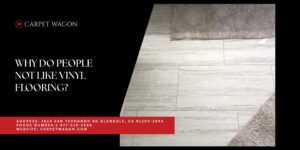It is recommended by the professionals that in hardwood flooring installation from start to end, the tools, preparations, laying down, cutting and attaching boards must be included.
The successful and effective wood floor installation is definitely one of the top rewarding part in DIY projects. As your room transforms into a beautiful, warm and stylish place, it could also give the installer a satisfying feeling of achievement.
The key to a successful installation is preparation. Make it certain that your sub-floor provides a flat, solid and good foundation. Likewise, the situation of your room won’t have a destructive impact in the flooring. This preparation also depends on what type of underneath conditions your sub-floor have, whether it has too much traffic or has an extreme moisture swings.
hardwood flooring installation
Solid vs. Engineered Hardwood Flooring Installation
In the buying guide discussion, the solid and engineered wood flooring installation significantly alters. As the solid wood flooring is crushed from the timber and it has the tendency to twist, warp, contract and expand with the changes in temperature and moisture. However, the several bonded plies of engineered hardwood made it more resistant to moisture and stable.
The solid hardwood has a straight raised plywood sub-floor or a prepared concrete slab. But, only the surface must be above grade level. It is more than three inches lesser than the surface level outside. It is due to humidity which is present underneath the below-grade flooring. It can be harmful to solid hardwood flooring. If your flooring is below grade, select a different material.
The engineered flooring is installed below or above grade. The kitchens and bathrooms are some of the best examples. Despite the dampness which exists in both areas, the surface can be protected by the solid flooring using a protective and durable finish.
Prepare your sub-floor
The various types of hardwood flooring usually drives in a usual wood-framed raised sub-floor , the OSB (Oriented Standard Board) or plywood sub-flooring sheets. This sub-flooring must be flat, clean, dry and structurally squeak-free, sound and clear for any surface fasteners or bumps.
Use a straight long board and carpenter’s level to check whatever rises or dips. Fill these dips and sand down the bumps using a leveling compound. Rearrange whatever screw and fastened down any shrill spots with a 1 and half inch screw.
To avoid the surface humidity from the rising of rooms that harmfully affect the flooring, the crawl space under a raised flooring must be in at least 18 inches properly and high vented with at least 1.5 square feet of the vent space for each 100 sq. feet crawl space. Then, cover the whole surface area using a six-mil colored black polyethylene, overlying the boards and fastening them with tape. Lengthen this material in 6 inches up to the concrete basis tape and the walls in its place.
Prepare the concrete slab sub-flooring
The hardwood flooring can be mounted on the above –grade concrete slab flooring. Once the slab exists within 60 days, moisture and dried tested, the slab is flat without a low or high spot. The trowel finish must be clean. For some other information, you may visit your local manufacturer if needed.




